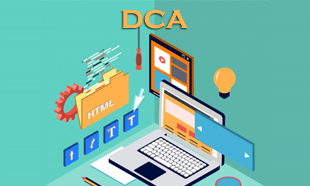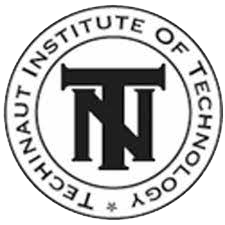5
Excel in the digital world with our Diploma in Computer Application at KS Computer Institute, VPO Dorangla, Gurdaspur, Punjab. Gain essential computer skills and propel your career forward. Join our esteemed Techinaut Institute of Technology franchise today!
DIPLOMA IN COMPUTER APPLICATION
In today's digital age, proficiency in computer applications is essential for individuals aiming to excel in various professional fields. "KS Computer Institute," a franchise of "Techinaut Institute of Technology" located in VPO Dorangla, Gurdaspur, Punjab, offers a six-month Diploma in Computer Application (DCA) course. This program is designed to equip students with the necessary skills and knowledge to harness the power of computer applications for personal and professional use. This article provides a comprehensive overview of the course curriculum, covering topics ranging from basic computer fundamentals to advanced applications and internet usage.
THE OBJECTIVE OF THE COURSE:
The primary objective of the Diploma in Computer Application (DCA) course at KS Computer Institute is to empower students with practical skills and theoretical knowledge in various computer applications. By the end of the course, students will be able to:
- Understand the fundamental concepts of computer operation, organization, and software applications.
- Master using popular software applications such as word processing, spreadsheet, and presentation packages.
- Navigate the internet effectively and utilize electronic mail for communication purposes.
- Develop proficiency in computer usage for personal, academic, and professional tasks.
- Prepare for entry-level positions requiring computer application skills in diverse industries.
COURSE OVERVIEW:
SECTION 1: BASIC OF COMPUTER
This section serves as a foundation for understanding computer systems and their operation.
Computer Fundamentals:Students learn about the essential components of a computer system, including hardware (CPU, memory, storage) and software (operating systems, applications). They understand computer architecture, input/output devices, and peripheral devices.
SECTION 2: COMPUTER ORGANIZATION
In this section, students delve deeper into the organization and structure of computer systems.
Computer Organization:Students explore the internal structure of computers, including the CPU, memory hierarchy, and storage devices. They learn about data representation, binary arithmetic, and logical operations. Understanding computer organization is crucial for efficient programming and system optimization.
SECTION 3: OPERATING SYSTEM
This section focuses on operating systems and their role in managing computer resources and facilitating user interaction.
Operating System Concepts:Students learn about operating systems, including Windows, macOS, and Linux. They explore their functions, such as process management, memory management, file system management, and user interface interaction.
SECTION 4: WORD PROCESSING
In this section, students learn to use word processing software to create, edit, and format documents.
Introduction to Word Processing:Students receive an introduction to word processing software such as Microsoft Word or Google Docs. They learn about document creation, text formatting, paragraph styles, and page layout. Practical exercises help students apply word processing skills to create professional-looking documents.
SECTION 5: SPREADSHEET PACKAGE
This section covers the use of spreadsheet software for data analysis, calculation, and visualization.
Introduction to Spreadsheets:Students learn to use spreadsheet software such as Microsoft Excel or Google Sheets. They explore spreadsheet terminology, cell referencing, formulae, and functions. They also learn to create charts and graphs to visualize data effectively.
SECTION 6: PRESENTATION PACKAGE
Students learn to create and deliver effective presentations using presentation software in this section.
Introduction to Presentations:Students receive training in presentation software such as Microsoft PowerPoint or Google Slides. They learn about slide creation, layout design, text formatting, and multimedia integration. They also learn techniques for delivering engaging and professional presentations.
SECTION 7: INTRODUCTION TO THE INTERNET
This section provides an overview of the internet and its information retrieval and communication uses.
Understanding the Internet:Students learn about the history and development of the internet, including its architecture and protocols. They explore internet services such as web browsing, search engines, email, and social media. They also learn about internet safety and security practices.
SECTION 8: ELECTRONIC MAIL
In this section, students learn to use email for communication purposes.
Email Basics:Students learn about email concepts such as addresses, mailboxes, messages, and attachments. They explore email etiquette, composing and sending messages, managing email folders, and organizing contacts. They also learn about email security and privacy considerations.
CONCLUSION:
The Diploma in Computer Application (DCA) course at KS Computer Institute offers a comprehensive curriculum to equip students with practical skills and theoretical knowledge in various computer applications. By covering topics ranging from basic computer fundamentals to advanced applications and internet usage, the course prepares students for entry-level positions requiring computer application skills in diverse industries. Graduates emerge with the ability to navigate the digital world effectively, utilize computer applications for personal and professional tasks, and adapt to evolving technology trends. With these skills, students are well-positioned to pursue further education or confidently enter the workforce.


